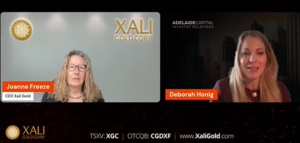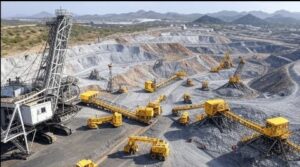The Canada based gold miner, Yamana Gold (AUY), has one of the lowest cash costs in the industry and strong growth profile which makes it one of the most attractive investments in the gold industry. The company is looking at a strong finish to 2013 as production at Gualcamayo increases significantly and a number of other mines are also expected to ramp up for the final quarter. Production at Gualcamayo, one of the largest gold mines in Argentina and in the world, is expected to increase significantly as the company commences operations in Phase III and begins operations at QDD Lower West. AUY has one of the lowest cash costs in the industry and while staying in the lowest cost quartile the company is expected to grow production by 15% in 2014. Moreover, with an expected drop in development spending in 2014, AUY’s FCF performance should also improve next year.
Toronto, Canada, based Yamana Gold reported 3Q13 adjusted EPS of $0.09, beating consensus estimates of $0.08 by one cent. The headline EPS of $0.06 was adjusted for one-time items including FX losses, share-based payments and impairments. Lower than expected non-operating costs largely drove the beat.
Yamana Gold’s business strategy has four main points. The company continues to work toward its long-term objective of 1.7 million gold equivalent ounces (“GEO”) of sustainable production. The second is evaluating some operations to ensure overall cost structure. The miner is focused to remain in the lowest quartile of the industry cost curve and finally mitigating capital costs to maximize available cash.
Focus On Cost Over Volume
2013 is a year of transition for AUY as three of the company’s new mines in Brazil are in the process of migrating to commercial status by late 2013 into early 2014. The company is expected to produce 1.3 million GEO in 2013 with a stronger 4Q13 as production at Gualcamayo increases significantly. Going into next year, completion of ramp-up should support production of more 1.4 million GEO. By 2015, all of AUY’s projects are planned to be operating at sustainable production levels, and production is expected to increase to more than 1.5 million GEO.
Despite of steady increase in production the company’s goal is to remain in the lowest quartile of industry cost curve. The company’s cost cutting initiatives are expected to save Yamana $115 million in all in sustaining costs and an additional $25 million in expansionary capital. For 2014 and 2015 the company has a co-product cash costs target of below $925 per GEO ($850 per GEO by-product). However, in the most recent quarter the company delivered every ounce of gold not at $925 per ounce but at $880 per ounce (850 per GEO by-product) so there remains some room of further improvement and some of that will come from sustaining capital.
As far as the company’s development projects are concerned, commissioning continues at Ernesto/Pau-a-Pique but with a new plan going forward. While originally planned as a combination of open-pit (Ernesto) and underground (Pau-a-Pique) operations, a new plan now continues to include an underground operation at Pau-a-Pique, but the company is now contemplating a near-to-surface underground operation at Ernesto. While the new plan will result in lower production levels, there will be more reliability of production and at reduced costs.
Conclusion
We have a buy rating on Yamana. In the long term Yamana offers strong production and free cash flow growth. In the current gold price environment we like Yamana’s focus on cost structure over volume growth. The company is among the lowest cash cost producers in the industry. It has a track record of turning around assets or divesting if the asset no longer fits within AUY’s cost structure.
The gold producer is making progress on its cost cutting initiatives, which should translate into cost reductions of more than $140 million. Out of $140 million, $115 million will be related to all-in sustaining costs and $25 million related to expansionary capital.
The company is looking at a production growth of ~15% in 2014 while keeping its costs low. In the long term the company continues to work toward its goal of 1.7 million GEO of sustainable production. Yamana is also poised to finish the year strong as the company’s new mines ramp up. AUY also has a very attractive dividend yield of 2.7%. In comparison Barrick Gold (ABX) has a yield of 1.1% and Goldcorp (GG) 2.4%. While others in the industry are either reducing or suspending the dividend, Yamana remains confident it can maintain its dividend policy in the current gold price environment given a reduction in capital and exploration spending in the coming years.
















